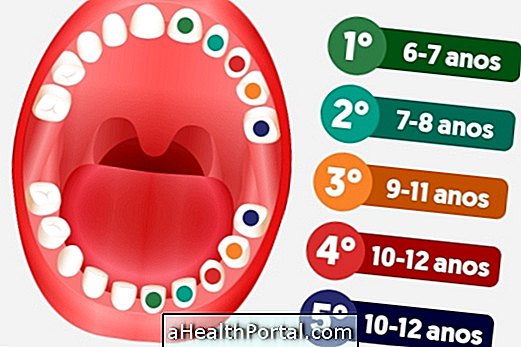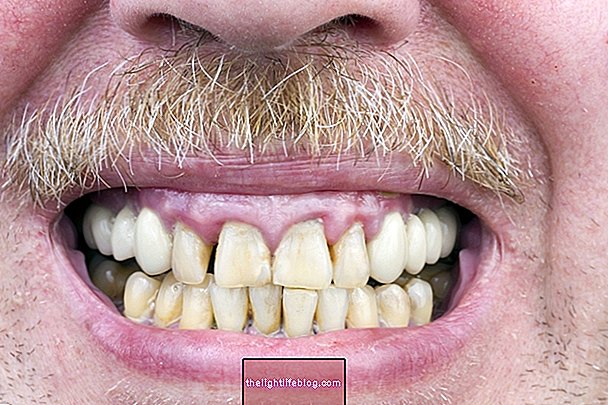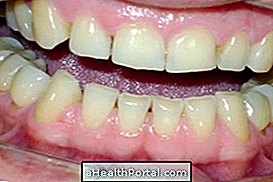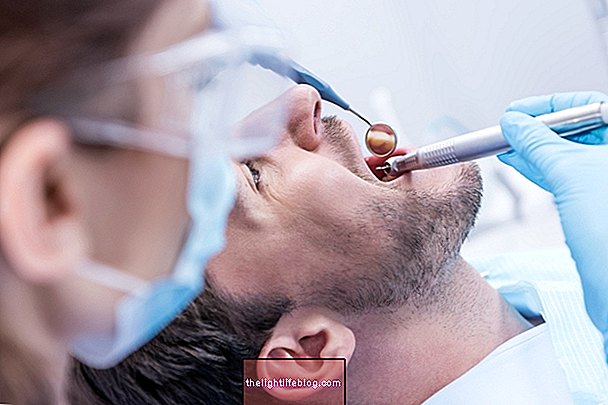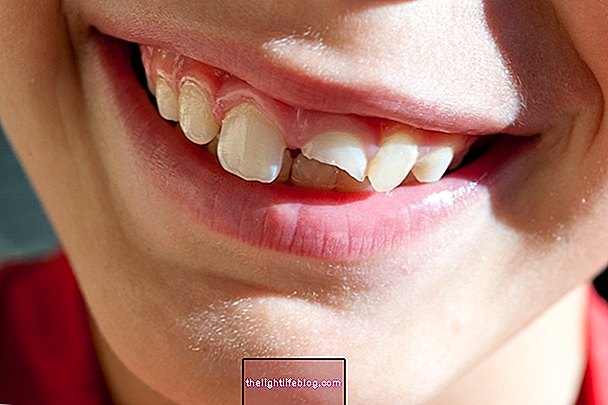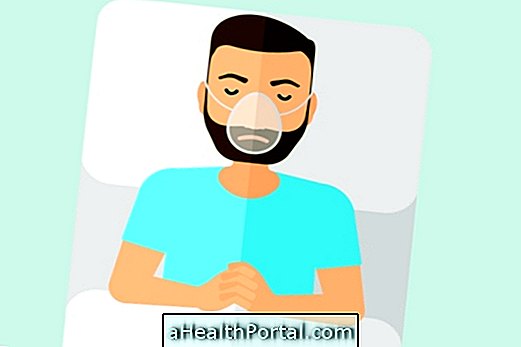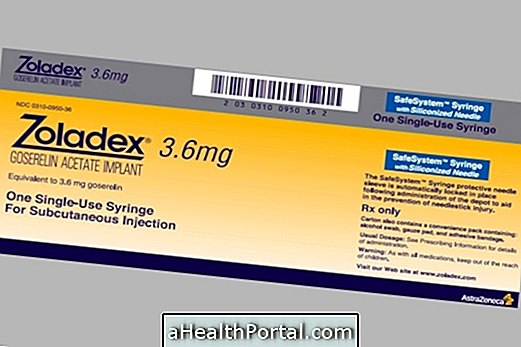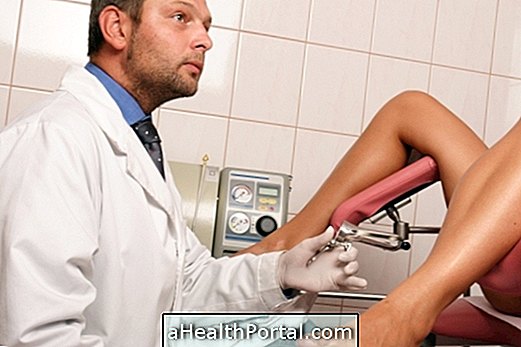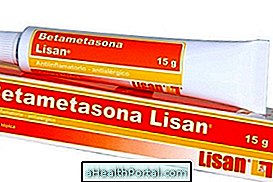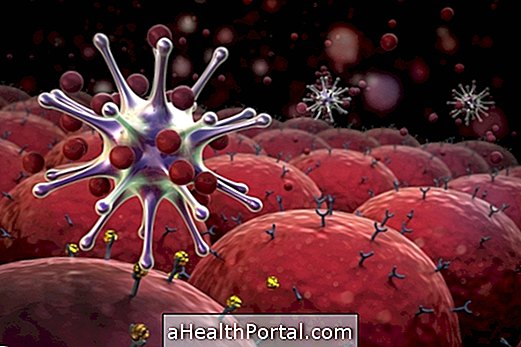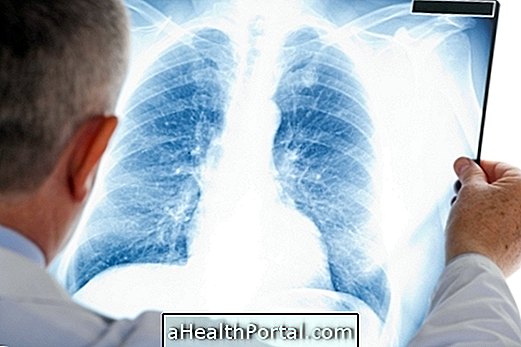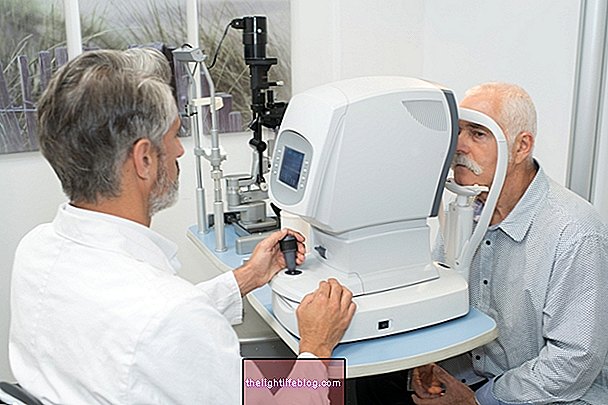Gingivitis is an inflammation of the gums due to plaque accumulation in the teeth, which causes symptoms such as pain, redness, swelling and bleeding.
Usually, gingivitis occurs when there is no proper oral hygiene, and food remains stored in the teeth, give rise to bacterial plaque and tartar, irritating the gums causing inflammation.
Symptoms of gingivitis include:
- Swollen gums;
- Severe redness of the gums;
- Bleeding when brushing or flossing;
- In the most severe cases there may be spontaneous bleeding of the gingiva;
- Pain and bleeding gums when chewing;
- Teeth that look longer than they actually are because the gum is retracted;
- Bad breath and bad taste in the mouth.
When these symptoms arise it is very important to ensure that you are brushing your teeth properly and flossing, as they are the best way to eliminate bacteria and prevent the worsening of the infection. See the step-by-step to brush your teeth well.
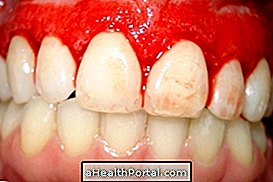

If, with the correct brushing of the teeth, there is no improvement of the symptoms and does not decrease the pain and bleeding, a dentist should be consulted to start the treatment with the dermatitis, and if necessary medication such as mouthwashes, for example.
The cure of gingivitis not only improves quality of life, but also prevents a more serious disease, known as periodontitis, which can lead to tooth loss.
Who is more likely to have
Although anyone can develop gingivitis, this inflammation occurs more in adults than:
- Do not brush your teeth daily, do not use dental floss, or mouthwash;
- They consume many foods rich in sugar like candy, chocolate, ice cream and soft drinks, for example;
- Smoking ;
- You have uncontrolled diabetes ;
- In pregnancy, because of hormonal changes;
- They have misaligned teeth, with greater difficulty for effective brushing;
- Are using fixed orthodontic appliance, without proper brushing;
- You have difficulty brushing your teeth because of motor changes such as Parkinson's, or bedridden people, for example.
In addition, people who do radiation therapy to the head or neck tend to have a dry mouth, being more likely to develop tartar and gingivitis.
How to treat gingivitis
When the gingiva is a little swollen, red and bleeding but you can not see the plaque buildup between the teeth and the gum, home treatment is enough to cure gingivitis. See a good home treatment to remove tartar from teeth and thus combat gingivitis naturally.
However, when gingivitis is already very advanced and you can see a large plaque hardened between the teeth and the gum, brushing can become very painful and difficult, causing more bleeding and treatment in the dental office.
In such cases, the dentist should be consulted in order to perform a professional cleaning with instruments suitable for dermatitisation. The dentist will also check if any tooth is decayed or needs some other treatment. In addition, it may be necessary to start using antibiotics in the form of tablets for about 5 days, using mouthwashes and dental floss, to eliminate bacteria faster and allow the gingiva to heal.
